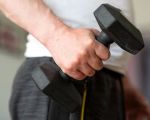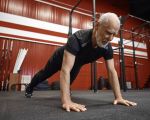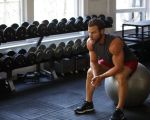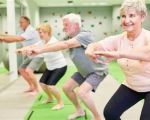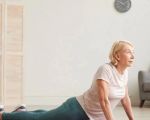- 1 - Gym Workout Plan for Women Seniors at Advanced Level
- 2 - Muscle Gain Strategies for Senior Women
- 3 - Detailed Exercise Routines and Progression
- 4 - Real-Life Success Stories and Motivation
- 5 - Expert Tips for Safe and Effective Training
- 6 - Where to Find the Right Equipment and Services
1. Gym Workout Plan for Women Seniors at Advanced Level
As women seniors progress in their fitness journey, particularly those who have been training consistently, it becomes crucial to adopt an advanced gym workout plan tailored specifically for their unique needs. Muscle gain at this stage is not only about lifting heavier weights but also about focusing on proper form, recovery, and addressing age-related physiological changes.
This advanced gym workout plan emphasizes strength training with moderate to heavy weights, compound movements, and progressive overload principles. By gradually increasing the intensity, women seniors can effectively stimulate muscle hypertrophy while minimizing the risk of injury.
The plan typically includes exercises such as squats, deadlifts, bench presses, and rows, all adjusted to suit individual capability levels. Integrating balance and mobility work is also essential to enhance functional strength, which plays a vital role in daily activities and overall quality of life.
1.1 Importance of a Structured Approach
At an advanced level, random or unstructured workouts may stall progress or lead to injury. Structured gym workout plans for muscle gain help track progress systematically and ensure every muscle group is adequately stimulated. This method also helps in maintaining motivation as seniors see measurable improvements over time.
2. Muscle Gain Strategies for Senior Women
Muscle gain in senior women requires a nuanced approach due to changes in hormone levels, muscle mass decline, and potential joint limitations. The key strategies include:
2.1 Nutrition and Recovery
Building muscle is not only about exercise; adequate protein intake and caloric surplus tailored to seniors’ metabolic rates are vital. Recovery periods should be carefully monitored, allowing muscles to repair and grow. Supplements like vitamin D, calcium, and omega-3 fatty acids can support overall health and muscle function.
2.2 Progressive Overload and Variation
Gradually increasing weight or resistance is essential to muscle hypertrophy. However, variation in exercise types, tempos, and rest periods can prevent plateaus and keep the workouts engaging. For example, alternating free weights with resistance machines or incorporating bodyweight exercises can be very effective.
2.3 Addressing Mobility and Flexibility
Improving mobility and flexibility ensures proper execution of advanced lifts and reduces injury risk. Stretching routines, foam rolling, and dynamic warm-ups should be integrated into the weekly plan.
3. Detailed Exercise Routines and Progression
A sample weekly workout might be structured as follows:
3.1 Day 1: Lower Body Focus
- Squats – 4 sets of 8-10 reps
- Leg Press – 3 sets of 10-12 reps
- Romanian Deadlifts – 3 sets of 8-10 reps
- Calf Raises – 4 sets of 12-15 reps
- Balance and Mobility Drills – 15 minutes
3.2 Day 2: Upper Body Strength
- Bench Press – 4 sets of 8 reps
- Seated Rows – 4 sets of 10 reps
- Overhead Press – 3 sets of 8-10 reps
- Bicep Curls and Tricep Extensions – 3 sets of 12 reps each
- Stretching and Foam Rolling – 10 minutes
3.3 Day 3: Rest or Active Recovery
Incorporate light walking, yoga, or swimming to promote circulation and muscle recovery.
3.4 Day 4: Full Body Functional Training
- Deadlifts – 4 sets of 6-8 reps
- Step-Ups – 3 sets of 10 reps per leg
- Plank Holds – 3 sets of 30-45 seconds
- Medicine Ball Throws – 3 sets of 12
3.5 Day 5: Cardio and Core
- Moderate-intensity cycling or treadmill walking – 20-30 minutes
- Core exercises (e.g., bird-dogs, bridges) – 3 sets of 15 reps each
Each exercise day includes warm-ups and cooldowns essential for injury prevention.
4. Real-Life Success Stories and Motivation
Consider the story of Jane, a 68-year-old retired teacher who started training at an advanced level after years of moderate exercise. Initially hesitant about lifting weights, she gradually adopted a gym workout plan focused on muscle gain. Within six months, Jane not only increased her lean muscle mass but also regained confidence in everyday movements like climbing stairs and carrying groceries. Jane’s journey highlights how seniors can overcome age stereotypes and embrace strength training for a better quality of life.
Such stories are motivating and underscore the effectiveness of tailored workout plans. They also reinforce the importance of persistence and consistency in training, especially in the senior years.
5. Expert Tips for Safe and Effective Training
Working out at an advanced level requires attention to safety. Experts recommend:
5.1 Proper Warm-Up and Cool-Down
Warming up with light cardio and dynamic stretches prepares the muscles and joints, reducing injury risks. Cooling down with static stretches aids recovery.
5.2 Listening to the Body
Pain should never be ignored. Differentiating between normal muscle fatigue and pain signaling injury is crucial for long-term health.
5.3 Professional Guidance
Consulting with fitness trainers specializing in senior fitness ensures the program is personalized and adjusted as progress is made. Periodic assessments help refine goals and training loads.
6. Where to Find the Right Equipment and Services
Finding suitable equipment and expert services can greatly enhance training outcomes. Fitness offers a curated selection of products and professional services specifically designed for women seniors focusing on muscle gain. Whether you need quality resistance bands, ergonomic weight machines, or access to knowledgeable trainers, exploring options through Fitness ensures you get tailored support for your fitness journey.



